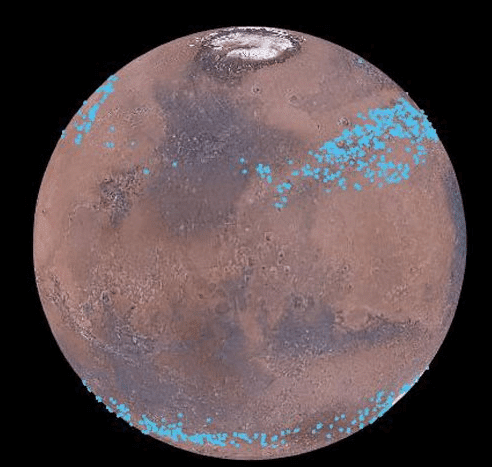
NASA sent over the very first rover to Mars in 1997, more than 20 years ago. Since then, NASA has sent more rovers and orbiters to amass as much data as possible about Earth’s closest neighbor (other than our own moon). Did it once hold life? Is there any trace of water? Because of its proximity and size, Mars has long been the subject of alien stories and martian movies. Now, we know it’s not nearly impossible to travel and perhaps live on Mars (with enough data). It seems like something out of a sci-fi dystopia novel, but Mars could be another home for humans within the next few decades. And in order to do that, scientists need to understand the red planet as much as possible. Though, Mars exploration today holds a more menacing undertone. Scientists have predicted humans will be devastated by future natural and manmade disasters in the very near future, pushing us towards colonizing other planets. Terraforming Mars into a livable environment for colonists is the ultimate goal, but we’ll need a lot of data before anything is guaranteed. So, how do they do it?
Why is Mars data so important?
Everything from budgeting resources and time to launching new technology requires immense planning (and money), which means scientists need a lot of data and analysis to back up their experiments. Prior rovers have collected so much new data, but it’s not nearly enough. People remain optimistic of this technological stride because we’ve managed to learn so much about Mars and continue to learn more. In fact, scientists are still trying to figure out the best way to get samples back from Mars to try and discover new signs of life. But the most pressing issue of life is ensuring the survival of future martians. With an official plan underway, NASA has been working hard to assess viable landing sites and ideal exploration sites to collect samples. Knowing what to do with the necessary resources at hand is a matter of life and death, literally. The colony is the ultimate goal and its survival relies on data.
The rover Opportunity has been offline for more than a month because a dust storm has kept it from recharging (via sunlight). Dust storms are typical on Mars and while rovers can recharge afterwards, people are a bit different. Learning about the local martian terrain and weather can prevent major accidents by designing better homes and training courses.
New data suggests there could be glacier belts around the planet, covered in dust. If confirmed, does this change where colonists are sent? Will they have to learn about glaciers for closer study? Does this change any theories or future approaches to spacecrafts? Data is what supports this entire project and what will hopefully keep the colony alive.
How is that data used?
Every stage of the journey to Mars uses and creates data. And for now, the application of Mars data mostly stays on Earth building rovers, training astronauts, and getting funding. In Hawaii, an isolated dome used to serve as a fake Mars compound. It’s not the first thing people think of for the Mars expedition, but it’s the final component to breathe life into the planet, living humans. The University of Hawaii and NASA simulated a possible martian abode to test candidates, but there’s more to it than meets the eye. Candidates commit to a (potentially) year-long stay in this dome following intense physical training and mental screening. If all goes well, people can familiarize themselves with the idea of living on Mars while carrying out NASA’s commands and unearthing unforeseen issues to consider.
Past stays in the dome have lasted up to a year, but its had its share of problems, one that has suspended dome activity for now. Inside, people undergo intense isolation, controlled regiments, and suit up before going outside. The dome study is a learning experience for candidates and scientists alike. People are psychologically unpredictable in stressful situations. Combined with tension and crazy accidents, it’s impossible to be predict how people will react on a foreign planet (especially in a life-threatening situation). And this is just the surface of Mars data analysis. Scientists are coming up with different robots to collect more data. Until then, you can play a cool video game designed with real Mars data.
Our future on Earth?
For now, the only inhabitant of Mars is a lonely rover. It’s the hope of different countries and companies to achieve space colonies for the future of mankind. Still, most of us will remain on Earth for the foreseeable future, facing the damage we’ve caused. Space travel is not the ultimate solution and it certainly won’t save us from the typical human problems we never seem to overcome. That being said, things are not hopeless on Earth. Environmental data and efforts are trying to raise awareness to preserve the Earth, but unfortunately less excitement for our home planet. Maybe humans make it to Mars, maybe we don’t. We won’t know for sure without trying or without data.


